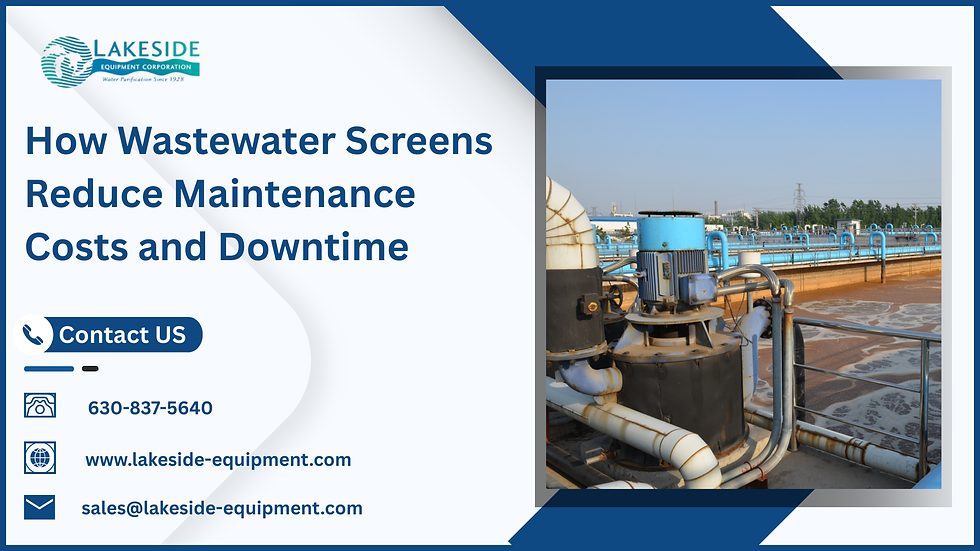Wastewater Treatment: Various Processes And Tools That Make It Successful And Easy
- lakesideequipment

- Apr 16, 2024
- 2 min read
Wastewater treatment facilities play a vital role in protecting our environment and public health. But behind the scenes, there are unsung heroes working tirelessly to ensure the smooth operation of these plants: wastewater screens. Wastewater, also known as sewage, isn't just water that's gone down the drain. It contains a complex mix of organic and inorganic materials, including debris, solids, and harmful bacteria. Before any treatment processes can begin, these larger materials need to be removed. This is where wastewater screens come in.
Wastewater screens act as the first line of defense in a wastewater treatment plant. They are essentially filters that remove large solids and debris from the incoming wastewater stream. This protects downstream equipment, such as pumps and pipes, from clogging or damage. Here's a breakdown of their key functions:
Preventative Maintenance: By removing large objects like rags, plastics, and greases, screens prevent blockages and equipment malfunctions. This reduces downtime and maintenance costs for the treatment plant.
Improved Efficiency: Screens ensure a smoother flow of wastewater through the treatment process. This allows the plant to operate more efficiently and at its designed capacity.
Enhanced Treatment: Removing large solids upfront improves the effectiveness of subsequent treatment stages. Biological processes, for instance, function better in the absence of big debris.
Environmental Protection: Uncaptured solids can hinder treatment and potentially release harmful pollutants back into the environment. Screens play a crucial role in safeguarding our waterways.
Types of Wastewater Screens
Wastewater screens come in various configurations, each suited for different applications and wastewater characteristics. Here are the three main categories:
Coarse Screens: Also known as bar screens or trash racks, these screens have the largest openings (ranging from 6mm to 150mm) and remove big objects like rags, sticks, and large debris. They are typically the first screen encountered by incoming wastewater.
Fine Screens: With openings between 1.5mm and 6mm, fine screens capture smaller solids that coarse screens might miss. These can include greases, hair, and food particles. Fine screens are often used after primary treatment to protect sensitive equipment in later stages.
Micro Screens: These highly efficient screens boast openings less than 1.5mm, removing even the finest particles. They are typically used in industrial wastewater treatment or for advanced treatment processes in municipal plants.

The choice of screen type depends on factors like the size of the treatment plant, the nature of the incoming wastewater, and the desired level of solids removal.
Wastewater screens play a critical, yet often unnoticed, role in ensuring the smooth operation and efficiency of wastewater treatment plants. By removing large solids and debris, they protect equipment, enhance treatment processes, and contribute to environmental protection. The next time you think about clean water, remember the unsung heroes – the wastewater screens – working tirelessly behind the scenes.




Comments